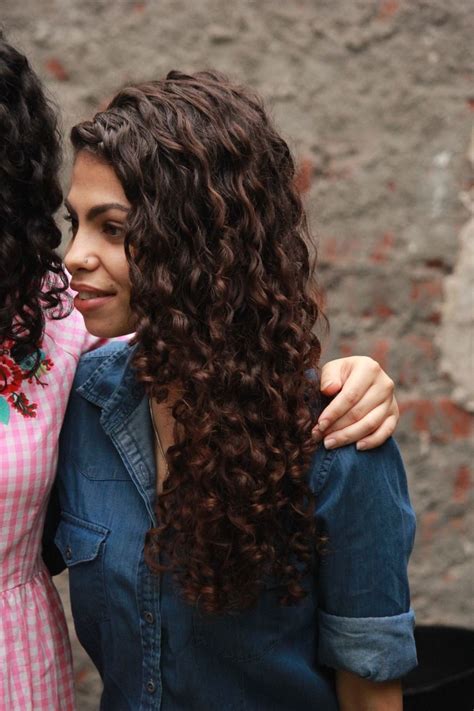Introduction

Indian women are renowned for their luscious, curly hair. From the soft ringlets of the south to the tight coils of the north, Indian curly hair is a testament to the diversity of the subcontinent. However, managing these beautiful tresses can often be a challenge. With the right knowledge and techniques, however, you can embrace your natural curls and unlock their full potential.
The Anatomy of Indian Curly Hair
Indian curly hair is typically categorized into three broad types:
- Type 3A: Loose, bouncy curls that are well-defined and have a slight S-shape.
- Type 3B: Medium-sized curls that are more tightly coiled than type 3A, with a more pronounced S-shape.
- Type 3C: Tight, corkscrew-like curls that are densely packed and have a springy texture.
Pain Points of Indian Curly Hair
Despite its beauty, Indian curly hair can come with its share of challenges:
- Frizz: The uneven cuticles of curly hair create spaces where moisture can escape, leading to dryness and frizz.
- Dryness: Curly hair tends to be drier than straight hair due to the difficulty in distributing sebum (natural oils) from the scalp to the ends.
- Tangling: The tight coils of curly hair can easily become entangled, leading to frustration and breakage.
Motivations to Embrace Indian Curly Hair
Despite these challenges, there are countless reasons to embrace your Indian curly hair:
- Volume: Curly hair has a natural tendency to add volume and body, which can be flattering for both thick and thin hair types.
- Versatility: Curls can be styled in countless ways, from loose waves to tight ringlets, offering endless options for self-expression.
- Uniqueness: Indian curly hair is a distinctive feature that sets you apart and makes you stand out in a crowd.
10 Commandments of Indian Curly Hair Care
- Embrace Moisture: Use moisturizing shampoos and conditioners to replenish hydration and prevent dryness.
- Avoid Sulfates and Silicones: These harsh ingredients can strip away natural oils and weigh down curls.
- Detangle with Care: Use a wide-toothed comb or brush when detangling, starting from the ends and working your way up.
- Use Leave-In Conditioners: These products provide continuous moisture and detangling benefits.
- Diffuse Your Hair: Air drying can lead to frizz. Use a diffuser attachment on your blow dryer to distribute heat evenly and minimize damage.
- Protect Your Curls: Wear a silk or satin bonnet or pillowcase to prevent breakage and tangling.
- Minimize Heat Styling: Heat can damage curls, so limit using hot tools such as flat irons and curling wands.
- Deep Condition Regularly: Use deep conditioners weekly or bi-weekly to restore moisture and strengthen curls.
- Get Regular Trims: Trimming split ends prevents breakage and keeps curls healthy.
- Love Your Curls: Embrace your unique hair texture and experiment with different styles to find what suits you best.
The 4 Pillars of Curly Hair Alchemy
To achieve truly voluminous, frizz-free curls, focus on the following four pillars:
- Hydration: Moisturize your curls regularly with products specifically formulated for curly hair.
- Definition: Use products that enhance curl definition, such as curl creams or mousses.
- Control: Tame frizz and reduce tangles with anti-frizz serums and detangling sprays.
- Protection: Shield your curls from heat and other damaging factors with heat protectants and UV filters.
Curlsome Glossary
Curlformer: A heatless styling tool used to create defined curls without the use of heat.
Denman Brush: A detangling brush with staggered bristles designed to separate and smooth curls.
Plopping: A technique involving wrapping your hair in a microfiber towel or cotton T-shirt to encourage curl formation and reduce frizz.
Squish to Condish: A method of applying conditioner by scrunching it into your hair to ensure even distribution and moisture penetration.
Tips and Tricks for Curly Hair Magic
- Use a microfiber towel to gently pat your hair dry after washing. Avoid rubbing, as this can create frizz.
- Apply leave-in conditioners to the ends of your hair first, where they tend to be drier.
- Sleep on a silk or satin pillowcase to reduce friction and prevent breakage.
- Invest in a good quality brush or comb specifically designed for curly hair.
- Avoid using harsh brushes or combs, as these can damage curls and create split ends.
- Use a wide-toothed comb to detangle your hair when it’s wet, as this will help to minimize breakage.
- Apply a leave-in conditioner or curl cream to help define and control your curls.
- Use a diffuser to dry your hair on a low heat setting. This will help to prevent frizz and preserve the shape of your curls.
- Avoid using heat styling tools on a regular basis, as this can damage your hair and make it more prone to frizz.
Pros and Cons of Indian Curly Hair
Pros:
- Beautiful and unique texture
- Adds volume and body to hair
- Versatile and can be styled in endless ways
Cons:
- Can be prone to frizz and dryness
- Requires special care and maintenance
- Can be time-consuming to style
Conclusion
Indian curly hair is a beautiful and multifaceted treasure. With the right knowledge and techniques, you can unlock the full potential of your curls and embrace your natural beauty. From understanding the anatomy of your hair to exploring the latest haircare innovations, the journey to healthy, voluminous curls is an enriching and empowering one. So, embrace your unique hair texture, experiment with different styles, and let your curls shine brighter than ever before.
